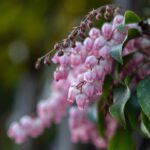The Japanese Lilac Tree is a stunningly beautiful and fragrant tree that can add a touch of elegance to any garden. Not only are they visually attractive, but they also require minimal maintenance and care, making them the perfect addition to any garden. As an experienced gardener, I am here to tell you that it is quite easy to grow and care for a Japanese Lilac Tree.
In this article, we will explore the different aspects of growing and caring for a Japanese Lilac Tree. We will discuss how to select the right location, how often to water and fertilize your tree, when to prune it, what type of soil it needs, as well as potential pests or diseases that could affect it. By following these guidelines, you can ensure your Japanese Lilac Tree remains healthy and vibrant throughout the year.
Finally, we will look at some tips on how to get the most out of your tree with little effort on your part. With some simple steps you can create an oasis in your garden filled with lush foliage and sweet-smelling blooms. So let’s dive in and explore all about growing and caring for a Japanese Lilac Tree!
Selecting A Japanese Lilac Tree
Japanese Lilac trees are among the most popular additional to any garden and their fragrant flowers make them an ideal choice for landscaping. It is estimated that 1 in every 5 gardens in Japan contain Japanese Lilacs. When selecting a Japanese Lilac tree, it is important to ensure that you pick one that is suited to your particular climate and soil conditions.
The first step in selecting a Japanese Lilac tree is to ensure that you choose one that is well-suited to the climate of the area where it will be planted. The plant requires at least six hours of direct sunlight each day, so it should be placed in an area that receives plenty of sunlight throughout the day. Additionally, Japanese Lilacs thrive best in USDA hardiness zones 6 through 8, meaning they can tolerate temperatures as low as -10 degrees Fahrenheit.
When selecting a suitable tree for your garden, it is important to consider the type of soil it will be planted in. The ideal soil type for planting a Japanese Lilac tree should be slightly acidic with a pH between 4.5 and 7.0 and should have good drainage capabilities. The soil should also retain some moisture without becoming soggy or waterlogged after heavy rainfalls. Additionally, mulching around the base of the tree can help maintain adequate moisture levels while also providing nutrients to its roots.
Armed with this knowledge, you can now confidently select a Japanese Lilac Tree that will thrive in your specific environment and provide long-lasting beauty for years to come!
Suitable Climate And Soil Conditions
Japanese Lilac trees, also known as Syringa reticulata, are a type of deciduous tree that can grow up to 20 feet tall in ideal climates. For example, James and his wife recently moved to the Midwest and were interested in planting a Japanese Lilac Tree in their backyard. As a botany specialist, I advised them that the tree requires certain climate and soil conditions for optimal growth.
The Japanese Lilac Tree thrives best in cool climates with temperatures ranging from 40-75 degrees Fahrenheit. This means that it is an ideal tree for temperate regions like the Midwest where James and his wife live. In addition to its temperature requirements, the tree needs moist soil that is slightly acidic with a pH level between 5-7. It’s important for those looking to plant this species of tree to make sure their soil meets these criteria before investing in a sapling or seedling.
When it comes to keeping your Japanese Lilac Tree healthy and thriving, it’s essential to maintain consistent moisture levels throughout its growth season – usually from March through October – while avoiding over or underwatering. To ensure optimal health of your Japanese Lilac Tree, mulch around the base of the trunk during times of hot weather and consider adding compost or fertilizer annually. With these tips in mind, you’ll be well on your way to growing a beautiful specimen!
Planting A Japanese Lilac Tree
Planting a Japanese lilac tree is an exciting process that requires planning and attention to detail. Approximately 75% of successful planting projects are due to the gardener properly preparing the soil before planting. To ensure successful growth, here are four essential steps for planting Japanese lilac trees:
- Select a location with full sun exposure and well-draining soil.
- Dig a hole twice as wide as the root ball and approximately equal depth.
- Place the tree in the hole so that the top of its root ball sits at ground level.
- Backfill with soil and water thoroughly to settle the roots.
For optimal growth, it is important to ensure that there is adequate space around your tree for air circulation and sunlight penetration. If you intend to stake your tree, be sure not to damage any of its roots by using appropriate materials such as bamboo stakes or rope instead of metal rods or wires. Additionally, mulching around the base of your tree will help maintain soil moisture levels and reduce weed pressure in the area.
Finally, proper watering practices can help your Japanese lilac thrive in its new home. Regular deep watering during dry periods will encourage healthy growth while avoiding saturating the soil which can lead to root rot or other issues. Following these steps will help ensure success with your Japanese lilac planting project!
Water Requirements For Japanese Lilac Trees
Water is an essential factor for the growth and health of a Japanese lilac tree. Without adequate water, the roots will not be able to absorb all the nutrients from the soil required for healthy growth. For this reason, it’s important to provide your Japanese lilac with regular and consistent doses of water. To do so, you’ll want to check the soil around your tree weekly and water as needed.
If you’re in a region with light rains, then you may not need to water your tree at all; however, if you live in an area that experiences periods of drought or high temperatures during summer months, then additional watering may be necessary. In general, it’s best to provide one inch of water each week; if rainfall doesn’t meet this requirement, then supplement with additional watering.
When watering your Japanese lilac tree, it’s best to use a slow trickle of water directed at the base of the tree for several minutes until the soil is completely saturated. Doing this will ensure that any deeper-rooted plants get adequate hydration and also prevent runoff from occurring. This method also helps prevent root rot by allowing time for excess water to drain away from the roots. Now that we know about proper watering techniques for Japanese lilacs, let’s look at fertilizing these trees for optimum health and growth.
Fertilizing Japanese Lilac Trees
Japanese lilac trees need to be properly fertilized in order to flourish. Fertilizing them helps to promote growth, bloom, and fruit production. On average, a Japanese lilac tree can grow between 2 – 8 feet tall and up to 8 – 10 feet wide in just one year when fertilized correctly.
Fertilizing a Japanese Lilac tree is an important step in the care routine and should be done at least once a year. The best time of year to fertilize is usually in late winter or early spring before new growth begins. A slow-release fertilizer formulated for acid-loving shrubs or trees should be chosen with an NPK (Nitrogen, Phosphorus and Potassium) ratio of 10-10-10 or 12-4-8 being recommended. It’s important not to overfertilize as this can cause the tree leaves to burn or turn yellow.
When applying the fertilizer, it should be spread evenly over the area where the roots are located and watered thoroughly afterwards. If possible, try to create a shallow trench around the tree trunk so that water from rainfall or irrigation can better reach the roots directly instead of running off too quickly. This will ensure that your Japanese Lilac tree gets all of its required nutrients for optimal health.
By following these steps for fertilizing your Japanese Lilac Tree you will ensure that it grows strong and healthy every season! Pruning and trimming is also essential for maintaining its shape, size, and health as well as removing diseased branches and dead wood which can otherwise lead to further damage.
Pruning And Trimming Japanese Lilac Trees
It is essential to prune and trim Japanese Lilac trees in order to sustain their health. Pruning and trimming can not only improve the tree’s structure, but can also spur new growth and flowering. In fact, pruning Japanese Lilac trees in mid-summer can increase the number of blooms by up to 50%.
For general maintenance of a Japanese Lilac tree, it is best to prune during early summer when the flowers are fading away. This will help create an optimal shape for the tree over time. Make sure to remove any dead or diseased branches as soon as you notice them. You should also avoid pruning too much at once – removing more than one-third at a time may put the tree under stress.
When trimming the Japanese Lilac tree, be sure to use sharp tools that are appropriate for this type of plant. You should also take care not to cut into old wood as it takes much longer for these tissues to heal over. Finally, make sure that any cuts you make are clean and precise so that your tree remains healthy and vibrant for years to come.
With proper care and attention, Japanese Lilac trees can be enjoyed in gardens all over the world. By following these simple tips, gardeners can ensure their trees remain healthy while providing beautiful blooms every season!
Insect And Disease Control For Japanese Lilac Trees
Caring for a Japanese lilac tree is like tending to a garden. It requires time, patience, and understanding of its needs in order to create a flourishing plant. Pruning and trimming are just the beginning when it comes to proper care – insect and disease control is also essential.
Insects such as aphids, mealybugs, spider mites, and scale insects may be drawn to your Japanese lilac tree in search of food or shelter. If these pests become too numerous, they can cause significant damage to the leaves and branches, resulting in stunted growth or even death. To reduce their numbers and prevent further infestation, you should use insecticides specifically designed for Japanese lilac trees. Additionally, manually removing any visible pests is an effective way to keep your tree healthy.
Disease control is also important for keeping your Japanese lilac tree safe from harm. Common ailments include powdery mildew, leaf spots, stem cankers, root rot and crown gall – all of which can significantly harm the health of your plant if left untreated. To help prevent or mitigate these issues you should routinely inspect your tree for signs of infection and treat with fungicides when necessary. Additionally, ensuring that your tree has adequate drainage will also help to reduce the risk of infection by creating less hospitable conditions for fungal growth.
Taking preventive measures against both insects and diseases will go a long way in helping maintain the vitality of your Japanese lilac tree during the growing season – and beyond! Winter care is another important step in providing optimal conditions throughout all stages of the year – but that’s another story entirely…
Winter Care For Japanese Lilac Trees
Winter care for Japanese Lilac Trees is a special consideration for the gardener. Japanese Lilac Trees are a beautiful addition to any landscape, and it is essential to prepare them for the cold winter months. As with all plants, there are some special considerations when caring for Japanese Lilac Trees during the winter season. Here are four steps to ensure your tree’s health and longevity:
Mulching: A layer of mulch around the base of your tree can help protect its roots from freezing temperatures and keep moisture in the soil.
Pruning: Prune away dead or damaged branches during winter dormancy to encourage new growth in spring.
Wrapping: Consider wrapping the trunk of your tree with burlap or frost cloth if temperatures drop below 0°F (-18°C). This will help insulate against extreme cold and keep roots warm.
Fertilizing: Fertilize your tree before dormancy begins in late autumn; this will provide essential nutrients for root development over winter.
By following these four steps, you can ensure that your Japanese Lilac Tree is well cared for during the cold winter months. Doing so will not only protect it from harsh weather conditions but also encourage new growth in springtime. With proper winter care, you can enjoy beautiful blooms on your Japanese Lilac Tree year after year!
Common Problems With Japanese Lilac Trees
Just like a gardener, the Japanese Lilac Tree needs special care to thrive. It’s not tricky, but it does require dedication – and if you are willing to put in the effort, you will be rewarded with beautiful blooms. Here are some common problems that can arise when caring for your Japanese Lilac Tree and how to prevent them:
First, the most common issue is improper watering. If the tree is overwatered or underwatered, its growth can suffer. When caring for the tree make sure to water it about once a week during dry spells and check for any signs of wilting or yellowing leaves that indicate drought stress. Additionally, make sure to keep an eye on soil moisture levels as too much water can lead to root rot or fungal disease.
Next, Japanese Lilac Trees need protection from harsh weather conditions such as windburn or frost damage. To protect your tree from these elements cover young plants with burlap during winter months and ensure that they are planted in a sheltered spot away from strong winds. Furthermore, mulching around the base of the tree will help maintain soil moisture levels and reduce temperature fluctuations which can cause stress on the plant.
Finally, pests can also be a problem when growing Japanese Lilacs. Aphids are especially problematic as they feed off of new growth and secretions from foliage which stunts growth and weakens plants over time. To prevent infestations use an insecticidal soap or neem oil spray every few weeks during peak season as this will help keep pests at bay without harming beneficial insects such as bees and butterflies.
Propagating Japanese Lilac Trees
Propagating Japanese lilac trees may sound like a daunting task, but with the right knowledge and techniques, it’s actually quite straightforward. After all, humans have been propagating plants for centuries! The process is relatively simple and requires just a few basic steps. As a specialist in botany and gardening, I’m here to tell you that there are several ways to propagate your Japanese lilac tree:
• From Cuttings: This involves taking cuttings from existing branches and placing them in soil or water until roots form. • By Layering: This involves gently bending a branch so that its tip touches the soil, then lightly covering it with soil and mulch. Once roots form, the branch can be severed from the parent plant and planted elsewhere. • By Grafting: This is a more advanced technique where two separate plants are joined together at their stems so they can grow as one.
Each method of propagation has its own set of advantages and drawbacks. For example, layering has lower success rates than other methods while grafting can produce new varieties of plants that wouldn’t be possible otherwise. Knowing which method works best for your particular situation will help ensure your success when propagating your Japanese lilac tree.
No matter which propagation technique you choose, it’s important to remember that patience is key. It may take some time before you see any results so make sure to be patient and keep an eye on your plants throughout the process! With proper care and attention, you can successfully propagate your own Japanese lilac tree at home – no green thumb required!
Japanese Lilac Tree Uses
The Japanese lilac tree is an incredibly versatile species, with a range of uses that make it ideal for both home gardeners and professional landscapers. With its deep green foliage and fragrant purple flowers, this tree offers a unique visual charm to any landscape. Additionally, its hardiness makes it an excellent choice for urban or rural locations. Beyond being an attractive ornamental tree, the Japanese lilac has several practical applications.
For one, its wood is lightweight yet strong and durable; making it useful in furniture-making, carpentry, and other craftsmanship projects. It also has medicinal properties when ingested or used as a topical solution to treat skin infections or minor wounds. And lastly, its fragrant flowers are often used in potpourri mixtures or even as components of perfumes.
All in all, the Japanese lilac is an invaluable asset for many different reasons. Not only does it provide aesthetically pleasing features to any landscape setting, but also serves multiple utilitarian purposes – from providing a material resource to offering medicinal benefits. As such, this tree continues to be a popular choice amongst botanists and gardeners alike.
Japanese Lilac Tree Varieties
When it comes to Japanese Lilac Trees, there are many varieties to choose from. Depending on the desired size and shape of the tree, gardeners can select the best option for their needs. Most Japanese Lilac Trees grow between 15 and 20 feet tall with a spread of 10 to 15 feet. This makes them ideal for small yards or as a screening plant in larger landscapes. There are also dwarf varieties that top out at eight feet tall, so they’re perfect for container gardening.
The blooms on these trees come in shades of white, lavender, and pink, depending on the variety. The flowers have an incredibly sweet fragrance that fills the air during bloom time in late spring or early summer. Some varieties will even repeat-bloom throughout summer and into fall if deadheaded regularly.
No matter which type of Japanese Lilac Tree you choose, proper maintenance is key to keeping your plant healthy and beautiful year after year. Pruning should be done in late winter or early spring before new growth begins to encourage fullness and keep the tree shapely. Mulching around the root zone helps conserve moisture while adding vital nutrients back into the soil. Watering during dry spells is also important, especially during newly planted trees’ first two growing seasons to promote strong root systems. With these care tips in mind, you’ll have a stunning landscape addition that will provide years of delight!
Interesting Facts About Japanese Lilac Trees
The Japanese Lilac Tree is like a living piece of art. Its graceful branches sway in the wind, its flowers create a bright and fragrant painting, and its deep green leaves provide an evergreen backdrop for any garden or landscape. There is much more to these trees than meets the eye—here are some interesting facts about them:
• Growth: The Japanese Lilac Tree can grow up to 25 feet tall and 15 feet wide with a rounded crown, making it perfect for anyone who wants a tree that won’t take up too much space.
• Blooms: From late spring to early summer, this tree will produce fragrant clusters of white flowers with each bloom lasting for up to two weeks.
• Leaves: The leaves of the Japanese Lilac Tree are long and thin with pointed tips, making them ideal for landscaping projects. They also turn yellow in autumn before dropping off in winter.
Botanists and gardeners alike love the Japanese Lilac Tree because it’s easy to care for and adds a lush look to any landscape. With proper pruning and watering, this tree can thrive in many climates—it’s even drought-tolerant! So if you’re looking for a low-maintenance tree that will bring beauty to your yard or garden, then consider planting a Japanese Lilac Tree. Ready to get creative? Let’s explore some landscaping ideas featuring the Japanese Lilac Tree!
Landscaping Ideas With Japanese Lilac Trees
Planting and landscaping with Japanese lilac trees can be a rewarding and fulfilling experience. Whether you’re looking to create a beautiful backdrop for your home or just want to fill your outdoor space with lush greenery, these majestic plants are sure to make an impression. Perfectly suited for temperate climates, the Japanese lilac tree offers a perfect balance of aesthetic appeal and practicality.
From subtle accents along garden paths to grand focal points in courtyard gardens, Japanese lilac trees have plenty of potential applications in your landscaping plans. With their sweet-smelling flowers, durable branches, and low maintenance requirements, these trees can provide an attractive addition to any outdoor setting. Consider using them as a hedge or border around your property for added privacy or as part of a larger garden design featuring other ornamental plants.
Whether you’re planting one Japanese lilac tree or several as part of a larger landscape project, proper care is essential for achieving the best results. To ensure that your plants remain healthy and vigorous, take the time to research the most effective pruning techniques and soil conditions. Additionally, be aware of any local pests or diseases that could cause damage to your trees and take steps to protect them from harm. By providing adequate care and attention throughout the growing season, you’ll be able to enjoy years of beauty from these lovely plants.
Tips For Growing Japanese Lilac Trees
A Japanese Lilac Tree can bring beauty, freshness and life to any landscape. It’s an evergreen with its unique fragrant flowers in a range of colors, and is sure to be a standout amongst its peers. Growing and caring for these trees isn’t as difficult as it seems, but there are still some tips to ensure they thrive in your garden or yard.
Let’s start off with the basics: location. Japanese Lilac Trees prefer partial shade, but will tolerate full sun if given enough water. Select an area that doesn’t get too much wind; the trees’ delicate leaves can easily be damaged by windy conditions. Make sure the soil is well-draining, too; standing water can be detrimental to their health.
Fertilizing is key when it comes to Japanese Lilac Trees – applying a slow-release fertilizer in late winter or early spring will help give them the nutrition they need to bloom and grow strong branches. Pruning is also important for keeping the tree healthy: trimming off dead or diseased branches not only keeps the tree looking neat and tidy, but also helps increase air circulation which increases disease resistance.
In addition, make sure you water your Japanese Lilac Tree regularly during drier periods – this will help ensure it stays hydrated and healthy throughout the season. With these tips in mind, you should have no problem growing and caring for a beautiful Japanese Lilac Tree!
Frequently Asked Questions
What Is The Best Fertilizer For A Japanese Lilac Tree?
An adage goes, “The best fertilizer is the gardener’s shadow.” This is true of any plant you wish to grow, including Japanese lilac trees. To ensure your tree gets the best care and grows healthy, you need to be aware of the best fertilizer for it.
As a specialist in botany and gardening, I can tell you that the best fertilizer for a Japanese lilac tree is an organic one with balanced nutrients. You should avoid using chemical fertilizers as they can damage the tree’s roots over time. Organic fertilizers, on the other hand, provide essential nutrients to the soil while also improving its structure and drainage.
When selecting an organic fertilizer for your Japanese lilac tree, look for one that has ingredients like composted manure, kelp meal or seaweed extract, fish emulsion, green sand or glauconite, rock phosphate and gypsum. These are all great options that will nourish and enrich your soil while providing essential nutrients to your tree’s roots. You can also use slow-release granular fertilizers or liquid ones at regular intervals throughout the year to keep your tree healthy and growing strong.
By following these tips on choosing the right fertilizer for your Japanese lilac tree, you can ensure that it grows strong and healthy for many years to come!
When Is The Best Time To Prune A Japanese Lilac Tree?
A Japanese Lilac Tree is an exquisite sight when in bloom, and it requires a certain amount of care to remain healthy and beautiful. Pruning is an essential part of this care, and the best time to do it is during the late winter or early spring months.
Caring for your Japanese Lilac Tree can be a rewarding experience if done correctly. Pruning is an important part of that process and should not be overlooked. In late winter or early spring, when the tree is dormant, you should begin pruning. This ensures that you are able to trim back any dead or damaged branches without causing harm to the living parts of the tree.
To prune your Japanese Lilac Tree correctly, start by removing any dead or diseased branches first as these can spread disease throughout the tree if left unchecked. The remaining live branches should be cut back so that they will maintain their shape while allowing light and air to circulate through them. As with all pruning activities, make sure you use sharp tools and wear gloves when handling the branches to avoid injury or infection. With proper pruning at the right time of year, your Japanese Lilac Tree will remain healthy and beautiful for many years to come.
Are Japanese Lilac Trees Drought Tolerant?
The Japanese Lilac Tree is a symbol of beauty, resilience and strength. Its delicate blooms grace the garden with their presence and its glossy green leaves stop us in our tracks. But one of the most important questions that a gardener needs to ask when considering this tree is, “are Japanese Lilac Trees drought tolerant?”
The answer to this question is yes. As with any other tree, however, there are certain steps that need to be taken in order for it to survive during times of drought. Firstly, it should be planted in an area where it will get plenty of sunlight and have access to water during dry spells. Secondly, if possible, mulch should be used around the base of the tree to help retain moisture in the soil. Lastly, extra watering may be needed during periods of extreme heat or low rainfall.
In addition to taking these steps to ensure survival during droughts, it is also important for gardeners to keep an eye out for signs of stress on their trees such as wilting leaves or discoloration and take appropriate action when necessary. With proper care and attention Japanese Lilac Trees can thrive even in times of drought making them a great choice for those looking for a hardy but beautiful addition to their garden!
How Often Do Japanese Lilac Trees Need To Be Watered?
Watering Japanese lilac trees is an art. It requires precision, knowledge, and a lot of patience! With the right care, these beautiful trees will reward you with fragrant blooms season after season. So how often do they need to be watered? Let’s dive into this question and learn how to keep your lilac tree healthy.
Japanese lilacs are surprisingly drought tolerant, so they don’t require as much water as some other trees. They prefer deep but infrequent watering—about once every week or two depending on the weather conditions and soil type. The soil should remain moist during the growing season, but not soggy or wet. During dry spells, you may need to water more often; during rainy periods it’s best to hold off until the soil begins to dry out again.
Your Japanese lilac tree will also benefit from regular applications of mulch around its base to help retain moisture in the soil. Adding a layer of organic compost will also help improve drainage and aeration in the soil, which can help prevent root rot and other issues caused by overwatering. Lastly, good airflow around your tree is essential for proper growth; be sure that its canopy isn’t overcrowded by other plants or shrubs planted too close together (beyond branches touching).
Watering your Japanese lilac tree correctly can make all the difference when it comes to its health and beauty! With careful attention and regular maintenance, you’ll be rewarded with stunning blooms each year that will bring delight to all who see them.
How Long Does It Take For A Japanese Lilac Tree To Reach Full Size?
It’s no surprise that the majestic Japanese Lilac Tree has become a popular garden showstopper. Its fragrant purple blooms and lush foliage make it an easy choice for anyone looking to add a bit of color and beauty to their landscape. But, how long does it take for this tree to reach its full size? Let’s take a closer look.
As with most plants, the time it takes for a Japanese Lilac Tree to reach its mature size depends on the conditions in which it is grown. In ideal conditions, such as well-drained soil with plenty of sunlight and sufficient water, this species can grow up to 20 feet tall and 15 feet wide in just 10-15 years. However, if the growing conditions are not ideal or if there is poor care or maintenance of the tree, it might take longer than expected for it to reach its full size.
To ensure your Japanese Lilac Tree reaches its full potential quickly and healthily, proper care and maintenance are key. This includes watering the tree regularly (about once per week during dry periods) and fertilizing regularly (preferably with an organic fertilizer). Additionally, pruning should be done regularly to help promote healthy growth and reduce any unwanted branches or shoots. With these simple steps taken on a regular basis, you can rest assured that your Japanese Lilac Tree will reach its full size in no time at all!
Conclusion
In conclusion, the Japanese Lilac Tree is an incredibly easy to care for tree that produces beautiful blooms. It is important to fertilize it correctly with a balanced fertilizer once or twice a year and prune it in late winter or early spring. The tree is moderately drought tolerant and can tolerate short periods of dryness but should be watered regularly during its first few years of growth. With proper care, a Japanese lilac tree will reach full size within five to seven years.
For those looking for a beautiful flowering tree that requires minimal care, the Japanese Lilac Tree is an excellent choice. Not only does it look great but with proper maintenance, it can provide your garden with lasting beauty for many years to come. So why not give the Japanese Lilac Tree a try?
Overall, the Japanese Lilac Tree is an ideal ornamental tree for any garden or landscape due to its low maintenance requirements and long-lasting display of color. With its hardiness and ease of care, this tree will bring beauty and joy to any home or garden.





























